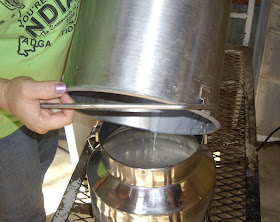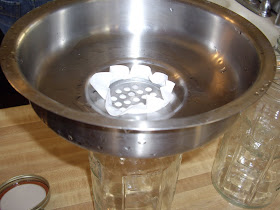The younger girls joined 4H this month. It's a new venture for us and time to learn some new skills. Our number one priority - learning to keep milk goats.

We've been drinking raw goat milk for a couple of years thanks to the kindness of a friend who shares with me. Annie is lactose intolerant (has been from birth) and while she can't tolerate regular milk, raw cow or goat's milk seems to be easy to digest. (I must post on this sometime and talk more on raw milk benefits).
Today, we joined my friend for a lesson on how to milk goats in preparation for getting our own next spring. We wanted to be sure this was something we could do and were comfortable with before we brought home some kids or a doe. Although I raised some sheep as a kid, goats are entirely different matter. They require a very regular milking schedule and so we've been considering this carefully for some time.
My friend raises Saanens which are excellent milk producers. Here's what we learned:
Clean the teats and udder first with a bleach and water mixture:

Check the milk for any problems:

Milk by squeezing the teat from top to bottom. This works best by grasping it with your thumb and first finger and slowly wrapping your other fingers around it (different from milking a cow):

Here's Annie and Moira giving it a try:

We poured the milk from the pail to a closed stainless steel container to transport it from the barn to the house:

A filter is used to strain any foreign items that could have fallen in the milk, such as a goat hair:

And finally it is stored in half gallon canning jars in the refrigerator:

I was thrilled that the girls jumped right in and took to it so well. This was one of my concerns. Milking them would not fall to just one person, but rather the family would have to be involved. Fortunately, they really seemed to like it and even asked if they could milk more!

























